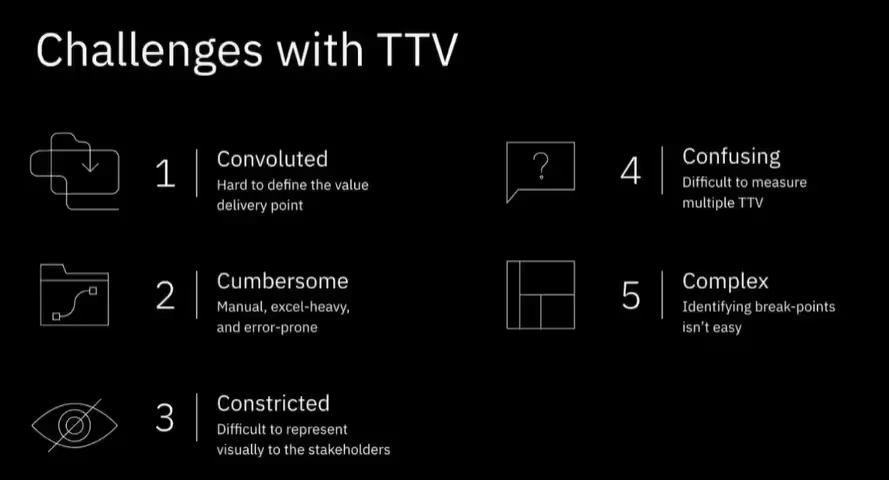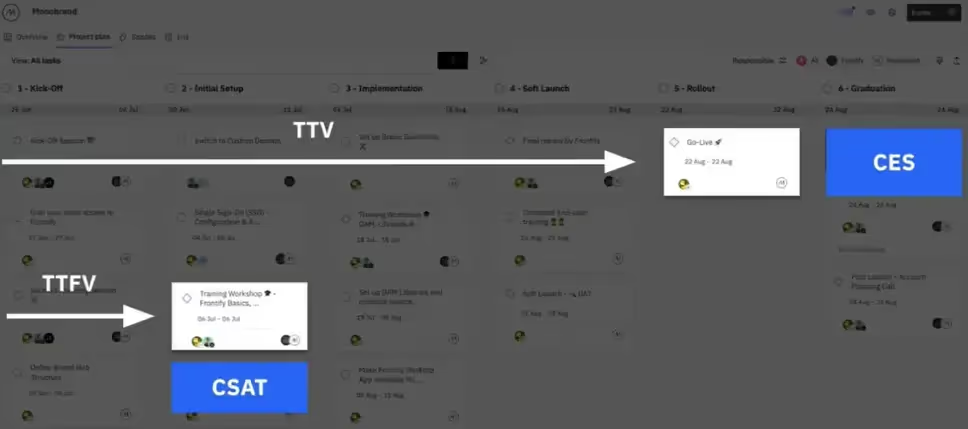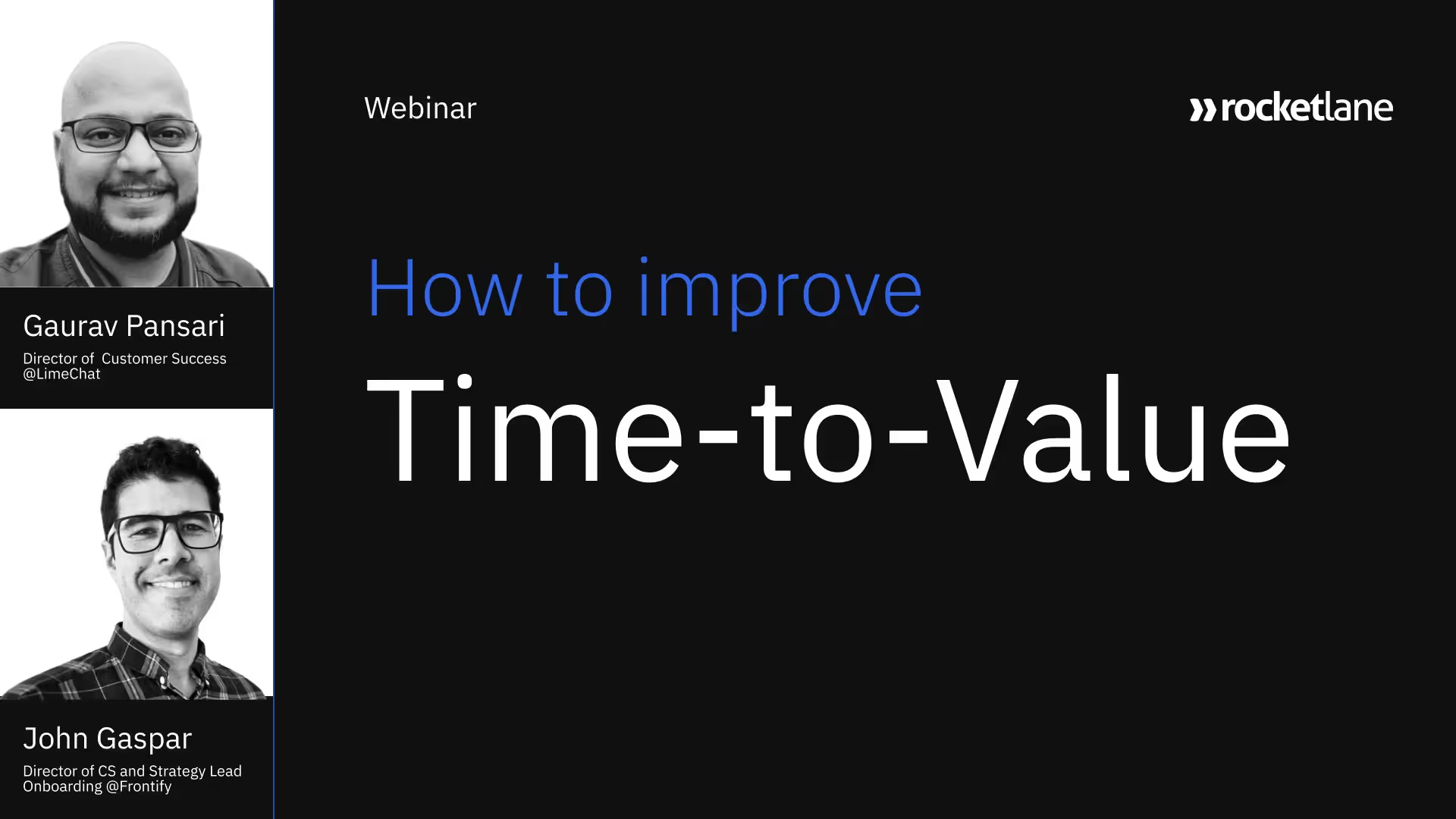When it comes to SaaS, customers have very little tolerance for delays.
When they buy your product, they expect it to work for them, and to find value from it quickly. A shorter time-to-value (TTV) simply means more stickiness and improved retention rates.
In this webinar, industry experts, John Gaspar and Gaurav Pansari, join us to share how they use TTV at Frontify and LimeChat, and their learnings from using Rocketlane to do so.
John is the Director of Customer Success for the AMEA region and the Onboarding Lead at Frontify. He drives the adoption of Frontify's brand management platform, helping clients establish a unified source of truth for their brand management.
Gaurav is the Director of Customer Success at LimeChat, where he leads the onboarding and CS teams. Before his foray into the SaaS world, Gaurav has been an entrepreneur and management consultant.
Read on for a round-up of the top takeaways from the webinar.
Why TTV matters now more than ever
In the current business environment, particularly within the SaaS sector, time-to-value (TTV) has a direct impact on ROI, and mitigates implementation and adoption costs. It can be a considerable competitive advantage for companies to be able to deliver results swiftly. This translates to customers realizing value earlier in their journey, fostering improved retention and creating more avenues for sustained growth.
Unlike in the past, customers are no longer tethered to a single company, they expect value more frequently and promptly. Hence, a rapid time-to-value is not merely advantageous; it is imperative. Any failure to demonstrate value in the early stages is only going to increase the likelihood of churn.
Another way to look at it is to look at onboarding as a flight journey to get from Point A to Point B. And no one likes long journeys. This makes shortening the time-to-value all the more critical.
Additionally, given that customer interest peaks during the sales process, tapping into it and delivering immediate value establishes a foundation for long-term customer commitment.
What makes time-to-value difficult to measure?
At Frontify and LimeChat, the primary challenges in measuring TTV fall along the following lines:
- Establishing a clear definition of TTV: It can be challenging to pinpoint when customers genuinely start deriving value. Especially when you think about diverse customer journeys, customers starting from different start points, and the involvement of external partners or teams.
- Multiple wow moments in the customer journey: Additional complexities arise due to multiple impactful moments for clients, each delivering different values to distinct stakeholders on the client side. The challenge lies in measuring Time to Value for each of these diverse users at different stages in the client journey.
- Ensuring consistent data quality across customers: Relying on manual input from Customer Success Managers (CSMs) to track task completion or go-live moments introduces potential inefficiencies and inaccuracies.
- Managing multiple projects: Managing multiple projects concurrently amplifies the difficulty of assessing what works, what doesn't, and identifying potential bottlenecks. Relying solely on project start and end dates lacks the granularity needed for actionable insights.

How Frontify tracks and uses TTV
Frontify’s TTV approach over the last year has focused on understanding the goals and requirements essential for a successful endpoint. This involved a meticulous rebuilding of processes to align with identified needs, from kickoff to project closure. Their perspective on TTV involves measuring from onboarding commencement to go-live, emphasizing not just project completion but also the time to the first value.
Key value milestones in Frontify’s customer journey
- Go-live: This marks a significant milestone where the platform becomes a single source of truth for the customer, addressing one of their most significant challenges.
- Deep-dive training workshop: This workshop with customers serves as another avenue for customers to derive value.

Frontify also makes sure to align time and efficiency metrics with quality metrics, such as Customer Satisfaction (CSAT) and Customer Effort Score (CES) by collecting feedback at specific milestones, for a comprehensive understanding of performance.
In addition to TTV, some of the other key events in their customer journey include:
- Time to Kickoff
- Time to First Value
- Set up duration
- Total in duration
The next steps for them in this journey is to establish clear goals, including the expected average time-to-value for a journey. The strategic integration of these metrics and goals allows Frontify to not only measure performance but also drive improvements in customer training efficiency.
How LimeChat leverages TTV to refine its customer onboarding process
LimeChat strategically leverages TTV to identify areas that need improvement within existing systems and processes. LimeChat has established different milestones for its projects and has templatized various customer types, use cases, and plans.
On a regular basis, LimeChat diligently tracks the TTV for different customer categories and product combinations. This approach provides them with a nuanced understanding of TTV for each milestone, especially concerning diverse customer contexts. This level of granularity allows the team to make informed decisions at the customer category/product combination level, addressing issues fundamentally and making continuous improvements.
LimeChat is also focused on having a comprehensive, bird's-eye view of their operations with Rocketlane helping them manage multiple projects simultaneously.
Defining key events on the value realization journey
LimeChat predominantly focuses on internal milestones, meticulously tracking the journey from both the customer and internal perspectives. Their key events are designed based on an in-depth understanding of critical points for customers, ensuring alignment between internal and customer-centric viewpoints. Customer feedback, particularly the success marker of customer satisfaction, contributes significantly to shaping LimeChat's key events.
While Frontify has not yet achieved shared milestones with customers, the goal is to evolve towards a stage where client perspectives on milestone prioritization can be integrated into the Time to Value (TTV) structure. Despite the internal focus, there is complete transparency on the goals and milestones planned with the customer.
Both LimeChat and Frontify focus heavily on gaining a comprehensive understanding of the journey. This involves analyzing customer feedback, engaging with CS and sales teams, and continuously evolving the process to reduce the Time to Value.
Q&A with John and Gaurav
How long do your implementation projects tend to take?
John: At Frontify, the onboarding process for smaller customers, typically aims for completion within a 60-day period. Larger companies with multiple sub-brands may take around 90 to 120 days, depending on project complexity.
What processes do you use to meaningfully track metrics? What metrics are being tracked to provide meaningful data to the business and impact process improvement?
John: We primarily track the average duration and, with the new key events feature, have more options for defining and measuring time. Metrics include customer CSAT, qualitative matrices, and checkpoints for individual businesses before completing onboarding.
Gaurav: We use Rocketlane to measure and track the customer onboarding journey's milestones, ensuring a quantitative approach. CSAT, qualitative metrics, and checkpoints are essential for a comprehensive view.
How do you keep in control of the go-live moment?
John: Ensuring a final review before go-live through email, video, or calls helps maintain control. Officializing this step in the customer onboarding plan provides peace of mind, and regular check-ins with customers keep the go-live task accurate.
Do you contractually commit to implementation TTV, or just use X days as a guide for customers?
Gaurav: While not contractually committing to TTV, our platform fee starts after a key event, making it a contractual obligation. This way, revenues depend on quick and efficient onboarding.
John: We don't specify a number of days in our contract but communicate the expectation of how long a typical project should take. Some companies align the contract start date with the onboarding finish date.
Interval IQ: How technology can help you measure and track TTV
Rocketlane's Interval IQ is a product of multiple conversations with customers, that revealed the inconsistencies and unreliability inherent in using manual approaches to track time-to-value (TTV).
Interval IQ addresses the most common challenges associated with TTV by enabling you to automate tracking, benchmark performance, and keep projects on track for success. You can:
- Configure project templates to automatically capture dates for key events
- Benchmark against planned timelines to assess adherence to commitments
- Record changes in project timelines for continuous benchmarking.
Automation underscores every feature of Interval IQ. For instance, deal closures trigger automated project creation – replete with timelines. As the project progresses, you automatically track missed events and delays, so you can stay on schedule and manage customer commitments effectively.
At its core, Interval IQ revolves around key events and intervals. Key events capture significant project milestones, such as kickoff, discovery, or requirement sign-off. Intervals, like time to value or time to first value, quantify the time between key events.
For broader insights, Interval IQ aggregates data across projects, allowing leadership teams to analyze performance trends, identify friction points, and highlight areas for improvement. It also integrates with CRMs like Salesforce or HubSpot to ensure comprehensive visibility for finance and leadership teams. Its reporting capabilities also extend to team or region-specific analyses, enabling targeted improvements and sharing best practices. The system ensures complete visibility into planned financial milestones within CRMs.
It’s features like this that make Interval IQ a must-have solution for companies like Support Logic that use it to accelerate TTV by 60%.
Want to see how you can use Interval IQ for your projects? Book a demo today!
Also read: How SupportLogic accelerated their time to value by 60% with Interval IQ.















